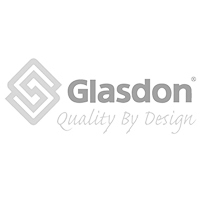Working at Height Essentials: Equipment and Hazards
Knowing the many kinds of equipment that can be used is crucial for persons who perform high-level work. It’s also important to completely understand the dangers associated with each piece of equipment in order to maintain your safety.
There are many various kinds of platforms that can be used when working at heights. Having the appropriate equipment is key because each one is made for a particular kind of situation.
When working at height, the most typical types of equipment are:
- Fixed & Tower Scaffolding
- Mobile Elevated Working Platforms (MEWPs)
- Ladders and Stepladders
Fixed & Tower Scaffolding
Scaffolding should prevent falls, but there are hazards associated with the erection, use and dismantling of fixed scaffolding.
Scaffolding serves as a vital structure in construction and maintenance projects, offering a stable platform for workers to access elevated areas. However, the erection, use, and dismantling of fixed scaffolding pose significant hazards if not handled with care. During the erection phase, risks include improper assembly leading to instability or collapse, as well as falls from unsecured sections.
Throughout use, hazards include slips, trips, and falls from platforms, particularly if guardrails and toe boards are not properly installed or maintained. Additionally, the presence of debris or tools on platforms can cause tripping hazards. During dismantling, workers face dangers such as falling materials or structures if the process isn’t carefully planned and executed.
Hazards
Scaffolding collapse:
- Overloading
- Poor design of scaffolding
- Incorrect, missing parts, or damage
- Poor maintenance and no inspection
- High winds can make the scaffolding unstable
- Incorrect erection or dismantling of the scaffolding
Falls from height:
- Scaffolding collapse
- Falls during the erection/dismantling
- Accessing and egressing the scaffolding
- Working on the scaffolding without adequate guard rails or other fall protection
- Slips and trips from poor housekeeping and adverse weather conditions
Proper training, adherence to safety protocols, regular inspections, and use of personal protective equipment are crucial for minimizing risks associated with fixed scaffolding throughout its lifecycle.
Mobile Elevating Work Platforms (MEWPs)
Mobile Elevating Work Platforms (MEWPs) are indispensable tools in various industries, providing safe access to elevated work areas. MEWPs are powered work at height access equipment, which run on electricity or fuel and there are two main different types:
- Boom MEWPs (commonly known as cherry pickers)
- Vertical MEWPs (commonly known as scissor lifts)
MEWPs have different ranges and load restrictions. The type required will depend on the work at height task and the height of the work.
However, the operation and use of MEWPs come with inherent hazards that must be carefully managed. During setup, incorrect positioning or unstable ground conditions can lead to tipping or overturning of the platform. Additionally, hazards arise from overhead obstructions, electrical hazards, or uneven surfaces that may compromise stability.
During operation, risks include falls from height due to improper use of guardrails or lack of fall protection equipment. Collisions with structures, equipment, or other workers are also potential dangers, particularly when maneuvering the platform. Moreover, entrapment or crush hazards can occur if the platform comes into contact with obstacles during movement.
Proper training, thorough risk assessments, adherence to safety guidelines, and regular equipment inspections are essential for mitigating hazards associated with the erection, operation, and dismantling of Mobile Elevating Work Platforms.
Ladders & Stepladders
Ladders and stepladders are commonly used as essential equipment for working at heights across various industries. These tools provide access to elevated areas for tasks such as maintenance, construction, or repair work. However, their improper use can lead to significant hazards.
Hazards
- Using ladders or stepladders on uneven and unstable ground can result in instability and can cause sudden movement.
- If the equipment is damaged or defective, this can result in someone falling if it breaks or malfunctions during use.
- Wooden ladders should not be painted, as it can hide defects and damage.
- Overreaching on a ladder or stepladder can cause them to topple.
- Standing too close to the top of a ladder or stepladder can result in it being top-heavy.
- If leaning ladders are not tied, or fixed, or footed properly they can slip to the side or outwards from the vertical surface.
- Incorrect placement or overreaching, which can result in falls and injuries.
- Damaged or poorly maintained ladders can collapse unexpectedly, causing serious accidents.
Users must adhere to safety guidelines, such as maintaining three points of contact, using the appropriate ladder for the task, and ensuring proper setup and stability. Regular inspection and maintenance are crucial to mitigate hazards associated with these indispensable tools for working at height.
Working at Height Training
Eurosafe has been a market leader in the fall protection industry and using this experience can provide a range of market-leading height safety training courses built around workers’ individual requirements and developed to provide them with an appropriate level of training.
The result is a much safer working environment where risks are minimised and there is much greater peace of mind for the building owner, manager, and employer.
For more information about our working at height training courses, please click below link.















